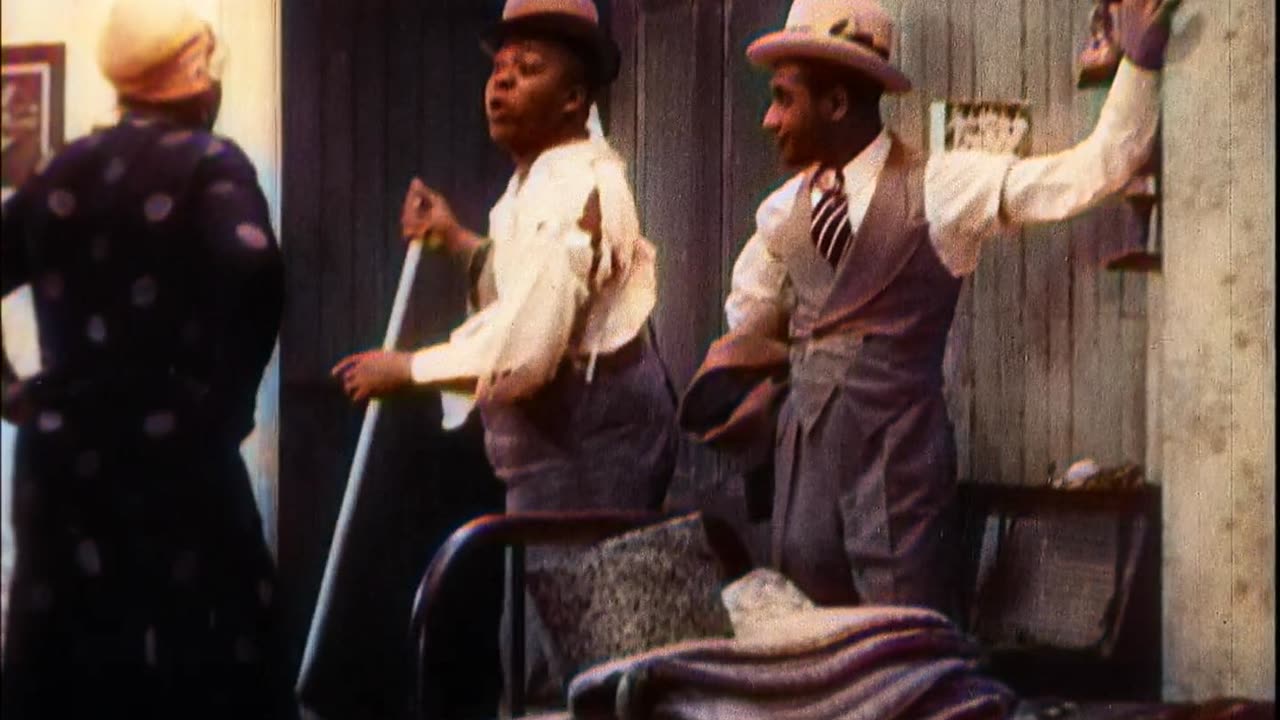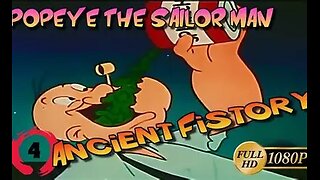Premium Only Content

St. Louis Blues (Short Musical Drama, 1929)
St. Louis Blues is a 1929 American two-reel short film, running about 16 minutes, directed by Dudley Murphy. It’s a significant piece of early sound cinema and stars the legendary blues singer Bessie Smith in her only known film appearance. The film features an all-African-American cast and is set during the Prohibition era, centering around Smith’s powerful performance of the W.C. Handy standard "St. Louis Blues," which she had popularized with a hit recording in 1925. Handy himself co-authored the film and served as its musical director, making it a direct dramatization of his song about a woman abandoned by her unfaithful lover.
The story begins in a rooming house where men are playing dice in a hallway. Jimmy (Jimmy Mordecai), a gambler and Bessie’s lover, arrives with a younger woman and joins the game, winning big. He takes the woman to the apartment he shares with Bessie (played by Smith). When Bessie enters and catches them together, she confronts the woman, who flees, and pleads with Jimmy not to leave. He shoves her to the floor and walks out with his suitcase. Devastated, Bessie begins singing "St. Louis Blues" right there on the floor, her voice raw with emotion.
The scene shifts to a speakeasy, where Bessie continues her lament, leaning against the bar as a patron rather than performing on stage. She’s accompanied by a band featuring James P. Johnson on piano and the Hall Johnson Choir, whose harmonies deepen the mood. The patrons don’t dance during her song—it’s a moment of shared sorrow. When she finishes, the band switches to an upbeat tune, and the crowd starts dancing. Jimmy reappears, greeted with cheers, and does a flashy tap dance. He calls out to Bessie, and they briefly reconcile, dancing together. But the reprieve is short-lived: Jimmy steals her money and shoves her back to the bar, leaving with a laugh as she resumes her mournful singing.
The film is a showcase for Smith’s commanding voice, which nearly overpowers the early sound technology, and it captures the vibrancy and struggles of African-American life at the time. Shot in Astoria, Queens, in June 1929, it blends naturalism with melodrama, offering striking moments like tracking shots through the speakeasy crowd. Once rumored to be lost or banned as "demeaning," it was never actually lost—prints existed, and one found in Mexico in the 1940s sparked renewed interest. In 2006, it was added to the National Film Registry for its cultural and historical significance. It’s a raw, compact snapshot of blues culture and Smith’s unparalleled artistry.
-
 7:00
7:00
Silver Screen Echoes
1 month agoPopeye - Ancient Fistory (Cartoon, 1953)
561 -
 LIVE
LIVE
The Mel K Show
1 hour agoMORNINGS WITH MEL K - Desperate Globalist Agenda Continues Unabated as Manufactured Chaos Abounds 9-12-25
804 watching -
 DVR
DVR
Bannons War Room
6 months agoWarRoom Live
35.8M8.38K -

Tudor Dixon
2 hours agoCharlie Kirk Assassination: Confronting Terrorism with Rob Chadwick | The Tudor Dixon Podcast
7.44K1 -
 1:01:02
1:01:02
VINCE
4 hours ago'WE GOT HIM' - Charlie's Killer In Custody | Episode 124 - 09/12/25
318K205 -
 LIVE
LIVE
LFA TV
13 hours agoKILLER CAUGHT LIVE PRESSER! - FRIDAY 9/12/25
5,621 watching -
 1:36:33
1:36:33
Dear America
4 hours agoBREAKING NEWS! Trump Announces Charlie’s Killer Is In Custody! DEATH PENALTY IS THE ONLY OPTION!!!
312K216 -
 1:45:41
1:45:41
Timcast
3 hours ago🚨PRESS CONFERENCE: Charlie Kirk Suspect In Custody | Tim Pool
158K181 -
 1:58:21
1:58:21
Badlands Media
8 hours agoBadlands Daily: September 12, 2025
83.4K14 -
 1:12:27
1:12:27
The Big Mig™
4 hours agoSenate Goes Nuclear ☢
23.8K9